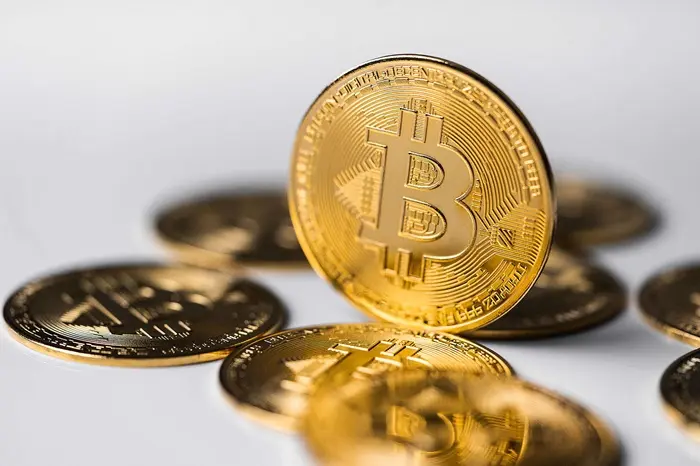The world of cryptocurrency has experienced significant growth and innovation over the past decade. One of the latest entrants into the cryptocurrency space is Pi Network, a decentralized digital currency that aims to provide easy access to crypto trading. Pi Network, developed by a group of Stanford PhDs, offers a unique model for mining coins and is available for mining via mobile phones. As more people engage with the network, the interest in trading Pi for U.S. dollars (USD) grows.
In this article, we will explore how to trade PI for USD, including the steps you need to take, the platforms available, and the considerations to keep in mind when trading this cryptocurrency. The process involves various steps and understanding key concepts in crypto trading, including wallets, exchanges, and market dynamics.
Understanding PI Cryptocurrency
Pi Network, often referred to simply as “Pi,” is a cryptocurrency developed by the Pi Network team. It differentiates itself from other cryptocurrencies like Bitcoin and Ethereum by offering a mobile-first mining experience. Unlike traditional cryptocurrencies, which require extensive computing power and electricity, Pi can be mined using a smartphone app, making it accessible to a broader range of individuals.
At its core, Pi aims to create a cryptocurrency that is user-friendly, sustainable, and inclusive. However, it is important to note that Pi is still in its “testnet” phase and is not yet fully traded on major exchanges. Despite this, Pi has garnered a significant following, with millions of users actively mining and exchanging Pi coins.
The value of Pi in USD is still uncertain as the coin has not yet reached the major exchanges. This makes trading Pi for USD a bit more complex compared to other cryptocurrencies, as it involves finding platforms that support the coin and may require waiting until Pi’s official listing on exchanges like Binance or Coinbase.
Step-by-Step Guide: How to Trade Pi for USD
Step 1: Set Up a Pi Wallet
Before you can trade Pi for USD, you need to store your Pi coins in a secure wallet. Pi Network provides a native wallet through its mobile app. This wallet allows you to store, send, and receive Pi coins.
To set up your Pi wallet:
Download the Pi Network app: First, download the Pi Network app on your mobile device from the App Store (iOS) or Google Play Store (Android).
Sign up and verify your identity: Once the app is installed, sign up for an account. You will need to verify your identity and connect to the Pi Network’s mining system.
Enable the wallet feature: After you’ve mined enough Pi coins, you will be able to activate the wallet feature within the app. This will allow you to store and track your Pi balance.
Secure your wallet: Make sure to set up proper security features, such as enabling two-factor authentication (2FA) for extra security.
The Pi wallet will be the primary place to store your coins before you trade them for USD. Keep in mind that as Pi is still in its early stages, there might be limitations on how much you can transfer or trade.
Step 2: Wait for Pi’s Listing on Major Exchanges
Currently, Pi is not listed on major cryptocurrency exchanges like Binance, Kraken, or Coinbase, which makes it difficult to directly trade Pi for USD. However, Pi Network’s developers have indicated that they plan to list Pi on exchanges once the coin transitions from the testnet phase to the mainnet phase.
The transition to the mainnet is a critical milestone for Pi, as it will determine whether Pi can be traded on major exchanges and whether its value in USD becomes more clearly defined. Keep an eye on announcements from the Pi Network team to know when Pi will be listed on exchanges.
In the meantime, there may be third-party platforms or peer-to-peer (P2P) exchanges where users can trade Pi. However, these platforms might carry additional risks, and it is essential to do thorough research before proceeding.
Step 3: Explore Third-Party Platforms for Trading Pi
Until Pi is officially listed on major exchanges, you can explore alternative platforms where Pi holders might be able to trade Pi for USD. These platforms may not be as widely known or regulated, so caution is advised. Below are the most common methods for trading Pi through third-party platforms:
Peer-to-Peer (P2P) Exchanges
P2P platforms allow users to trade cryptocurrencies directly with each other. These platforms act as intermediaries to ensure that the trade is conducted securely. Users can list their Pi coins for sale and find buyers willing to pay in USD.
Popular P2P platforms to explore include:
LocalBitcoins: Although primarily used for Bitcoin, LocalBitcoins sometimes offers other cryptocurrencies for trading, including Pi coins.
Paxful: Similar to LocalBitcoins, Paxful is another popular P2P exchange where users can buy and sell Pi coins. However, it’s crucial to research whether Pi coins are actively traded on the platform.
When using P2P exchanges, ensure you review user ratings and feedback before committing to any transactions. Scams can occur, and it’s essential to use caution when transferring coins to ensure you are not at risk.
Pi to Other Cryptocurrencies
If you’re unable to directly trade Pi for USD, consider trading your Pi for another widely accepted cryptocurrency, such as Bitcoin (BTC) or Ethereum (ETH), on a P2P platform or smaller crypto exchanges. Once you have converted your Pi into another cryptocurrency, you can transfer it to major exchanges such as Binance, Coinbase, or Kraken and sell it for USD.
Steps for trading Pi for Bitcoin or Ethereum:
Find a platform that allows you to trade Pi for Bitcoin or Ethereum.
Transfer your Pi to the platform and convert it into Bitcoin or Ethereum.
Once you have Bitcoin or Ethereum, move it to a major exchange that supports BTC or ETH.
Sell the Bitcoin or Ethereum for USD on the exchange.
Withdraw your USD to your bank account.
Step 4: Exchange Pi for USD on Major Cryptocurrency Exchanges
When Pi is officially listed on major exchanges, trading Pi for USD will become significantly easier. Cryptocurrency exchanges like Binance, Coinbase, and Kraken are popular platforms for trading coins like Bitcoin, Ethereum, and others for USD. Once Pi is listed on these exchanges, users will be able to directly trade Pi for USD.
On these exchanges, the process of trading Pi for USD will follow the standard steps for cryptocurrency trading:
Create an account on the exchange and complete the verification process.
Deposit Pi: Transfer your Pi coins from your Pi wallet to the exchange’s wallet.
Trade Pi for USD: On the exchange platform, find Pi (PI) and place a trade to convert it into USD.
Withdraw USD: After the trade is completed, you can withdraw your USD to your bank account.
Step 5: Consider the Fees
When trading Pi for USD, keep in mind that you may incur fees at various stages of the process:
Transaction fees: P2P platforms and cryptocurrency exchanges charge transaction fees. These fees can range from a small percentage to a flat rate depending on the platform.
Conversion fees: If you need to convert Pi into another cryptocurrency like Bitcoin or Ethereum, you may incur additional conversion fees.
Withdrawal fees: When transferring USD to your bank account, exchanges may charge a withdrawal fee.
Step 6: Stay Informed on Regulatory Changes
Cryptocurrency regulations are constantly evolving. Some countries have imposed strict regulations on cryptocurrency trading, while others are more lenient. It is important to stay informed about the regulatory environment in your country, as it may impact the availability of exchanges that support Pi or affect how you can trade Pi for USD.
Always ensure that you are trading on regulated platforms that comply with local laws to avoid potential legal issues.
Conclusion
Trading Pi for USD presents unique challenges due to the coin’s current status in the testnet phase and its absence from major cryptocurrency exchanges. However, by following the steps outlined in this article, you can position yourself to trade Pi for USD once the coin is listed on exchanges or find alternative methods to convert your Pi into another cryptocurrency for further trading.
The key to successfully trading Pi for USD is patience, as the full functionality of Pi is still unfolding. Keep an eye on developments from the Pi Network team and stay informed about when Pi will be listed on major exchanges. Until then, explore P2P platforms and consider converting Pi into other cryptocurrencies as a temporary solution.
As always, exercise caution when trading cryptocurrencies, especially when dealing with third-party platforms or peer-to-peer exchanges. Ensure that you understand the fees, risks, and regulations associated with crypto trading before proceeding.
Related topics:























